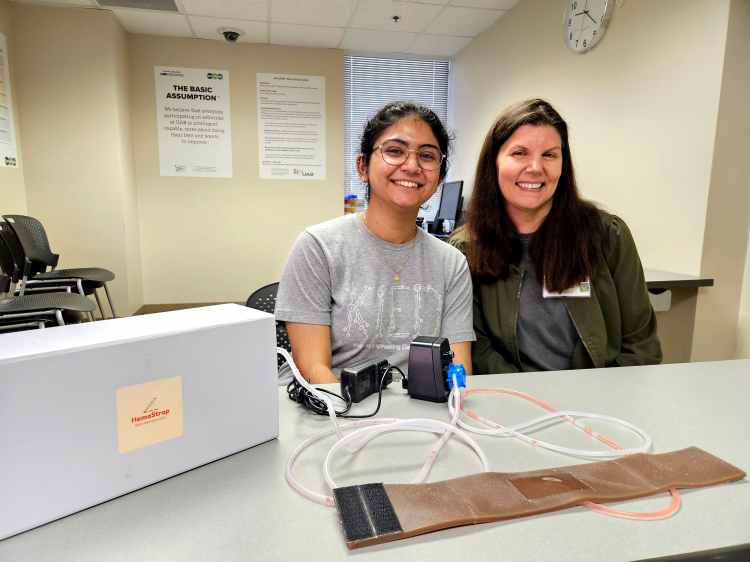From Classroom to Clinical: Biomed engineering students design new simulation trainer

When recent UAB biomedical engineering graduate Bhumi Patel began her capstone project, she and her teammates were tasked with solving real-world problems for real-world stakeholders.
Their client? UAB Clinical Simulation. Their challenge? Develop a realistic, reusable simulation model for a post-thyroidectomy hematoma—a rare but potentially life-threatening complication.
Working under the team name “HemaStrap,” Patel and her fellow biomedical engineering seniors—Mackenzi Parks, Zora Paschel and Avantika Reddy—spent two semesters designing a model that could mimic both the appearance and treatment of the condition.
In a real case, a reopened blood vessel can cause blood to pool in the neck, putting dangerous pressure on the trachea. Clinicians must quickly recognize the symptoms and make an incision to relieve pressure and drain the blood.
“Our main design goals were to simulate the expansion of a hematoma and make it reusable after an incision,” Patel said.
The result is a modular neck strap with a removable insert. Tubing beneath the insert connects to a peristaltic pump, allowing fluid to fill the space and create a realistic expanding hematoma. After the incision, the insert can be swapped out for a new one with silicone adhesive in just minutes.
Throughout the project, the team collaborated closely with senior simulation coordinator Andrea Hammett and operations specialist Aja Burgin to make a trainer to be used in this post-operative complication setting.
“It was great getting their feedback and seeing their reactions each time we brought a new prototype,” Patel said.
Now, the polished, skin-textured model is ready for use in simulation training.
“Seeing it come together has been amazing,” she said. “We’re proud to have created something that will be used to help train learners for real-world situations.”
UAB Medicine’s Clinical Simulation program offers opportunities for individuals and teams across UAB Medicine and beyond to practice before they deliver care. We encourage all who provide and support patient care to “Sim First.” Together, we can put our patients’ safety first.




0 Comments